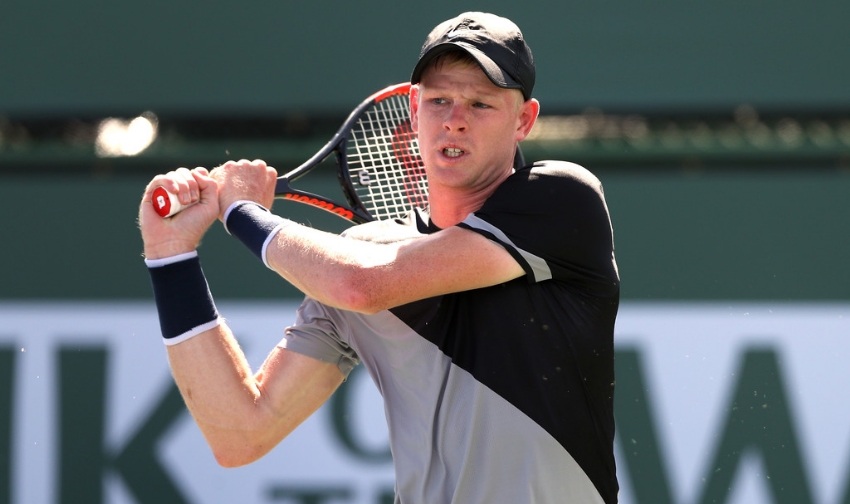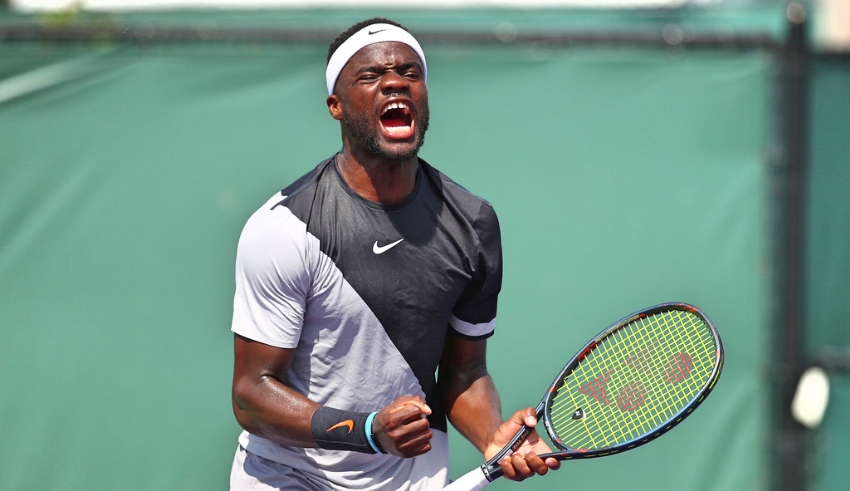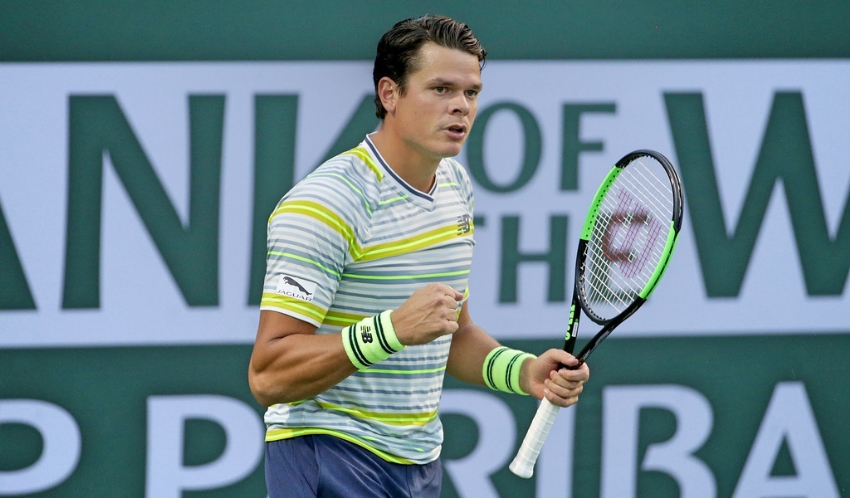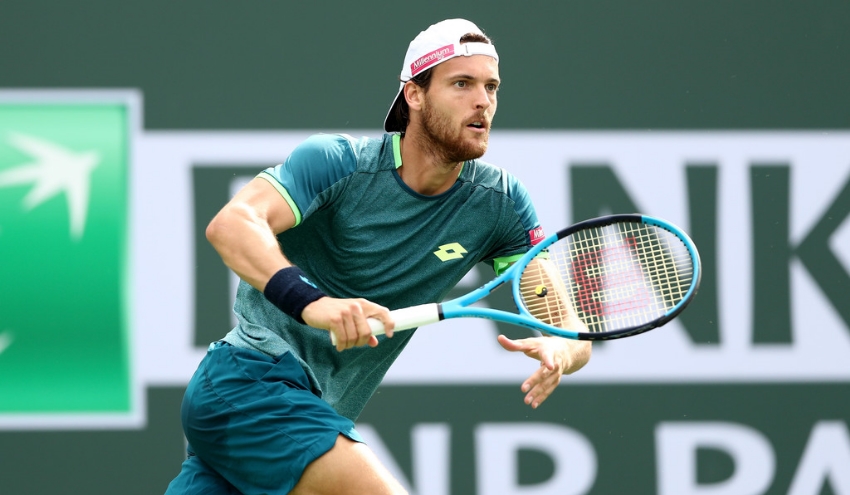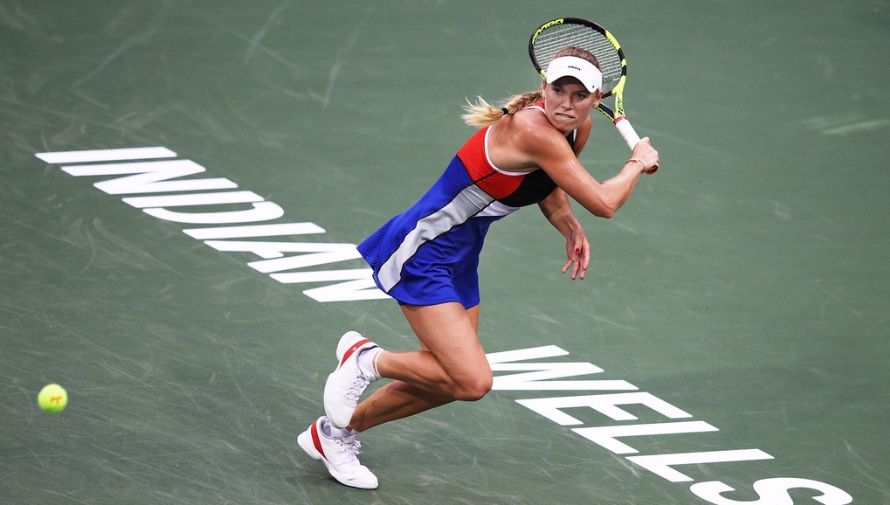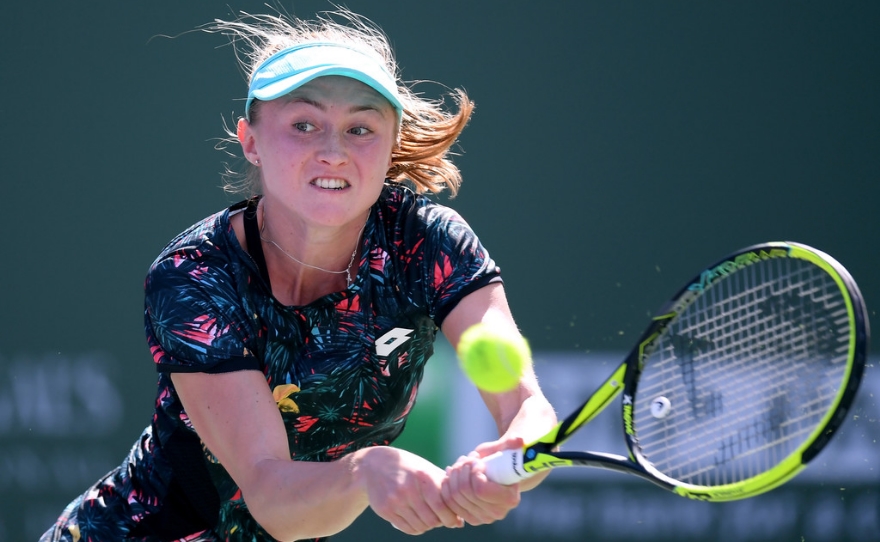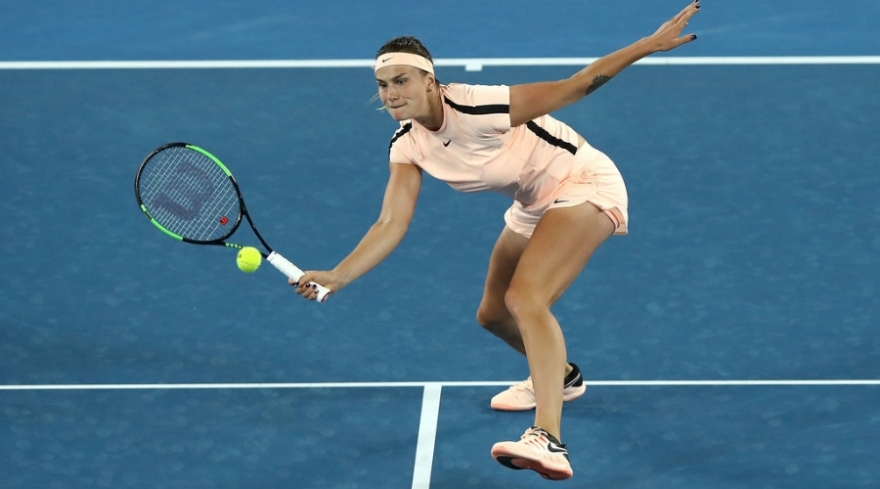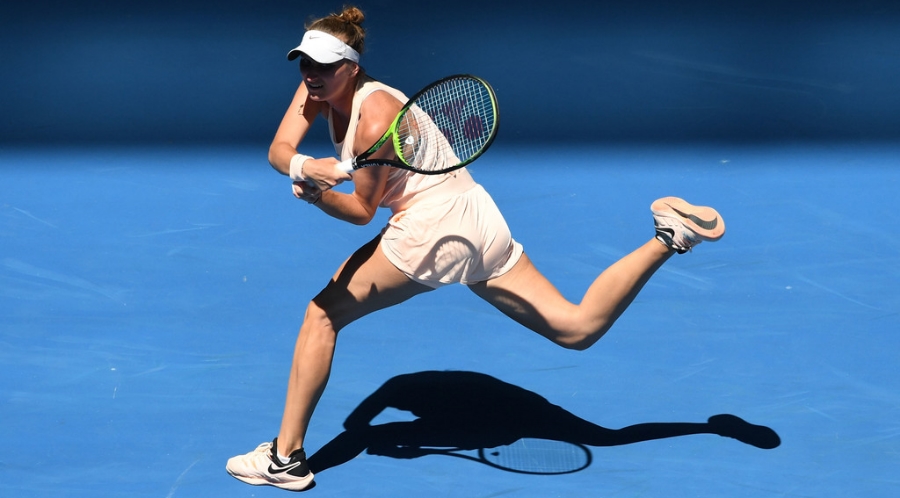A friend of mine texted me in the beginning of this match’s deciding set and asked: “Can we please talk about Shapo’s serves?” It was a rhetorical question of course, her way of languishing in the misery of watching Denis Shapovalov, one of her favorite players, hit only 37% of his first serves in for the first set, and 32% for the second, while throwing in seven double faults for good measure.
I answered her question with another one, except mine was on a positive note: “Can we please talk about Shapo’s second serves?”
The main reason why Shapovalov was still in the match was precisely because he gave a clinic for one set on how to win points when your first serve temporarily disappears. The problem was that he was playing against a top 20 player and you can only live on your second serves for so long against that type of competition. The Canadian’s first-serve began working better in the late stages of the match, but before we get there, let us take a closer look at the first set.
Both players seemed to start with similar game plans in mind. Each knew that the other would prioritize offense over all else, but instead of focusing on defending well, they seemed to have decided that attacking furiously, early in the point, was the best defense. Making the occasional error was acceptable within this game plan, as long as the opponent did not get to win points on his terms.
Querrey began by serving big, aiming for direct points or big cuts on follow-up ground strokes if Shapovalov happened to get the return back in the court. He did make an error at 40-15, but again, that was within acceptable parameters, because he won the other points thanks to big serves or by forcing Denis into errors.
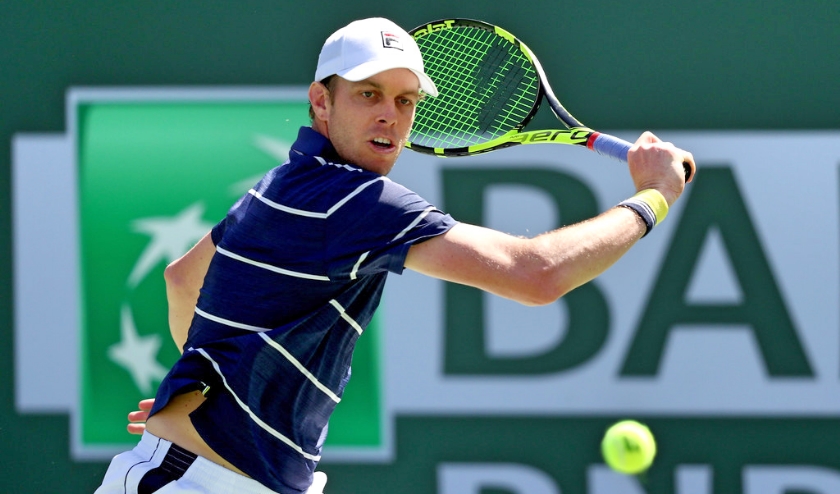
Querrey took a big cut on the return on Shapovalov’s second serve to start the next game. Denis was ready. He set his feet quickly and sent the ball back with the same pace. Sam was caught off guard and made the error. 15-0 Shapovalov.
Sam tried another explosive return on the next point. Denis responded even better this time, nailing a spectacular winner with his backhand as he was backing up from the American’s aggressive return. 30-0 Shapovalov.
The Canadian added an ace to go up 40-0.
He followed that with a double fault, surely caused by his attempt at a risky second serve, aware of Querrey’s intention to whack the return. Querrey did go for another rocket return at 40-15, and again, Shapovalov answered the call with a solid backhand down-the-line to the open corner. Querrey did get to the ball but missed it under pressure.
The initial response to the Querrey charge succeeded.
That serving game was the best reaction Shapovalov could have put together to plant seeds of doubt in Querrey’s mind that just power alone would not be enough to oust the Canadian today.
The shift in tone carried into the next game that decided the set. Shapovalov essentially showed Querrey that he can beat the American in his own game. He turned the tables around and went for bazookas on returns, just like the American tried to do in the previous game. At 40-30, he punished Sam’s second serve two points in a row with big forehand returns. Sam saved that break point. Later in the game, on another deuce, Shapovalov went for another big cut on a backhand return that landed on the baseline. Querrey barely got it back and Shapovalov put the forehand away, earning his third break point. He finally got the break on another huge forehand return, this time for a clean winner.
When Shapovalov held serve easily to confirm the break and go up 3-1, Querrey was facing an unpleasant reality. He came out with what he thought was a good plan. It worked in the first game. Then, Denis essentially said, “not so fast Sam.” He turned the challenge around and threw it back at Sam. And precisely where Denis had the answers, Sam did not.
Whereas Shapovalov quickly adjusted to handling Querrey’s monster-return tactic in the second game of the match, Querrey could not handle Shapovalov’s big returns in the following game. That is because Querrey’s legs are not as agile as Shapovalov’s and do not react as quickly to an offensive shot.
Whereas Shapovalov needed one game in which the American had to largely resort to second serves to go up a break, Querrey could not break Shapovalov’s serve all set long, even though the Canadian played with a 37% first-serve percentage. That is because Shapovalov relentlessly varied the placement and speed of his second serves throughout the set.
It’s not that Querrey played a bad set. In fact, he attacked relentlessly, often with success. He served big or used the 1-2 punch after a big serve, and as a result, held serve easily for the rest of the set. Except that the damage was already done. He happened to under-perform on his first serve for one game during which his second serve did not penetrate (or kick, or slice) enough to stop Denis from finding enough rhythm to launch one big return after another. Denis, in comparison, under-performed on his first serve for the whole set, yet he never faced a break point.
If you regularly read my posts, you probably know that I prefer to give concrete examples to illustrate my observations. As for Shapovalov’s second-serve efficiency, the 3-2 game is an excellent example and here is what you will see. Down 0-15, Shapovalov serves and volleys to get back to 15-15. Then, he throws in a heavy-spin second serve that collects an error from Querrey. Up 30-15, he loses the point but goes for a wide, slice serve, which he had not tried previously. He follows that up with a flat first serve, earning a direct point to go up 40-30. Sam gets back to deuce. Dennis misses his first serve again. He hits a high-pace second serve, catching Sam off balance. The American’s return is short and Denis attacks, forcing Sam into a defensive lob that sails long. Denis then closes out the game with a big first serve.
Just look at how many different types of serves the American had to confront even though the majority were second serves. He had to return low on a serve-and-volley, lunge to the outside on a wide serve, step inside the court only to jerk back quickly to get a high-paced second serve back, only to mention a few.
For an additional example, see the 30-15 point at 4-3; a second serve by Shapovalov lands so deep in the service box that Querrey, who stepped inside the baseline with the intention of producing a big return, does not have enough time to make a full swing and misses the return deep.
At the end of the set, Shapovalov had collected 10 out of 19 second-serve points and never faced a break point. He did win 11/11 first-serve points. Imagine if Shapovalov landed most of his first serves in!
You cannot, however, count on winning two successive sets in the third-round of an ATP 1000 event, against a top-20 player, while making less than 40% of your first serves and recording an increasing number of double faults (2 in the first, 5 in each of the next two sets). Shapovalov’s first-serve percentage did not improve in the second set and it did not take long before it caught up to him.
1-0 down in the second set, the Canadian double-faulted twice, once on game point at 40-30, and again on break point, and fell behind 2-0. Querrey raced to a double-break lead when he broke Shapovalov’s serve again in the sixth game. It was on another mediocre service game by Shapovalov in which he double-faulted twice again and missed an easy forehand volley in the net on break point.
When Querrey closed out the second set 6-3, the only question that mattered to Shapovalov was whether he could improve his first-serve percentage or not. He did, to a whopping (!) 53% in the third set. Yet, it was once again his second serve that kept him in the match when the third set began.
At 30-30 in the first game, he hit a great kick serve to the “T” and jammed Querrey’s backhand into his body. Sam’s return fell short and Shapovalov hit the winner to go up 40-30. Three points later, Shapovalov pocketed the game on another kick second serve that bounced so high that Sam had to jump to hit at the last moment. He missed it deep.
During the 2-2 game, Denis’s first serve finally began to come back. It was a contested game that saw Querrey have four chances at breaking Shapovalov’s serve. On three of those, Denis did not need his second serve, winning two of them directly on his first serves. He finished the game with an ace and grabbed the 3-2 lead.
Shapovalov would have to save two more break points in the 3-3 game, one with a hard serve to the service-box ‘T’ and the other with an ace. He won that game on another wonderful kick serve that bounced high into Sam’s body, causing him to miss the return.
At 5-5, Shapovalov would double-fault twice more to go down yet another break point at 30-40, only to save it, yet again, with a big first serve that allowed him to hit a winner on the next shot.
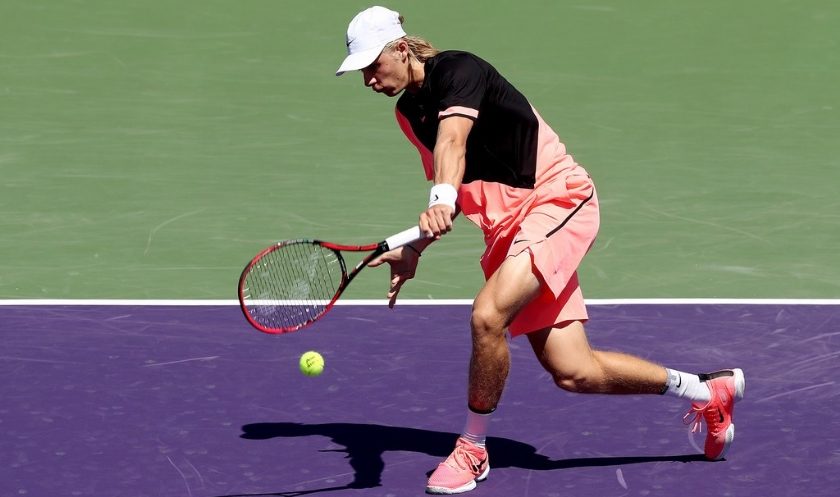
Having saved seven break points since 1-1 in this deciding set, Shapovalov would only need one chance himself to break Querrey’s serve. It came in the 6-5 game. Querrey made only one first serve in the game and committed three routine baseline errors, including the backhand in the net on match point. It was an abrupt ending, considering how comfortably Sam had been holding serves since the early break in the set.
While Shapovalov’s first-serve percentage barely climbed above 50% in the final set, he got them in on six out of the seven break points saved in the final set. Out of those six points, five were won directly on his first serve. Querrey, for his part, had his worst first-serve percentage in the final set at 36%.
In other words, the first-serve percentage numbers from the first set were essentially reversed in the third set and that brings me to my last point about the difference in this match. When Querrey had to overwhelmingly resort to second serves in the third set, he depended on winning those points from the baseline. It worked for the most part, but all it took was a single string of bad errors (four in that last game) for things to fall apart for Querrey. Unlike Denis, he could not collect many free points on his second serves.
When Shapovalov missed his first serves in the first set, he was still able keep Querrey off balance on returns through the use of different speeds and spins on his second serves. He would thus earn some effort-free points on return errors by Sam or collect weak enough returns to finish the point himself on the next shot.
I would speculate that Martin Laurendeau, Shapovalov’s coach, is extremely pleased with the match, not because his pupil played particularly well, but because he ‘performed’ at a high level. By that I mean, Denis showed high IQ in terms of problem-solving when Querrey came out swinging very early, dealt with the malfunctioning of one of his main weapons (first serves) by meticulously regulating his second serves, remained cool-headed numerous times under pressure throughout the third set, and rediscovered his missing weapon during the extended stages of the match.
In the fourth round, Shapovalov will take another rising youngster, the Indian Wells semifinalist Borna Coric.

